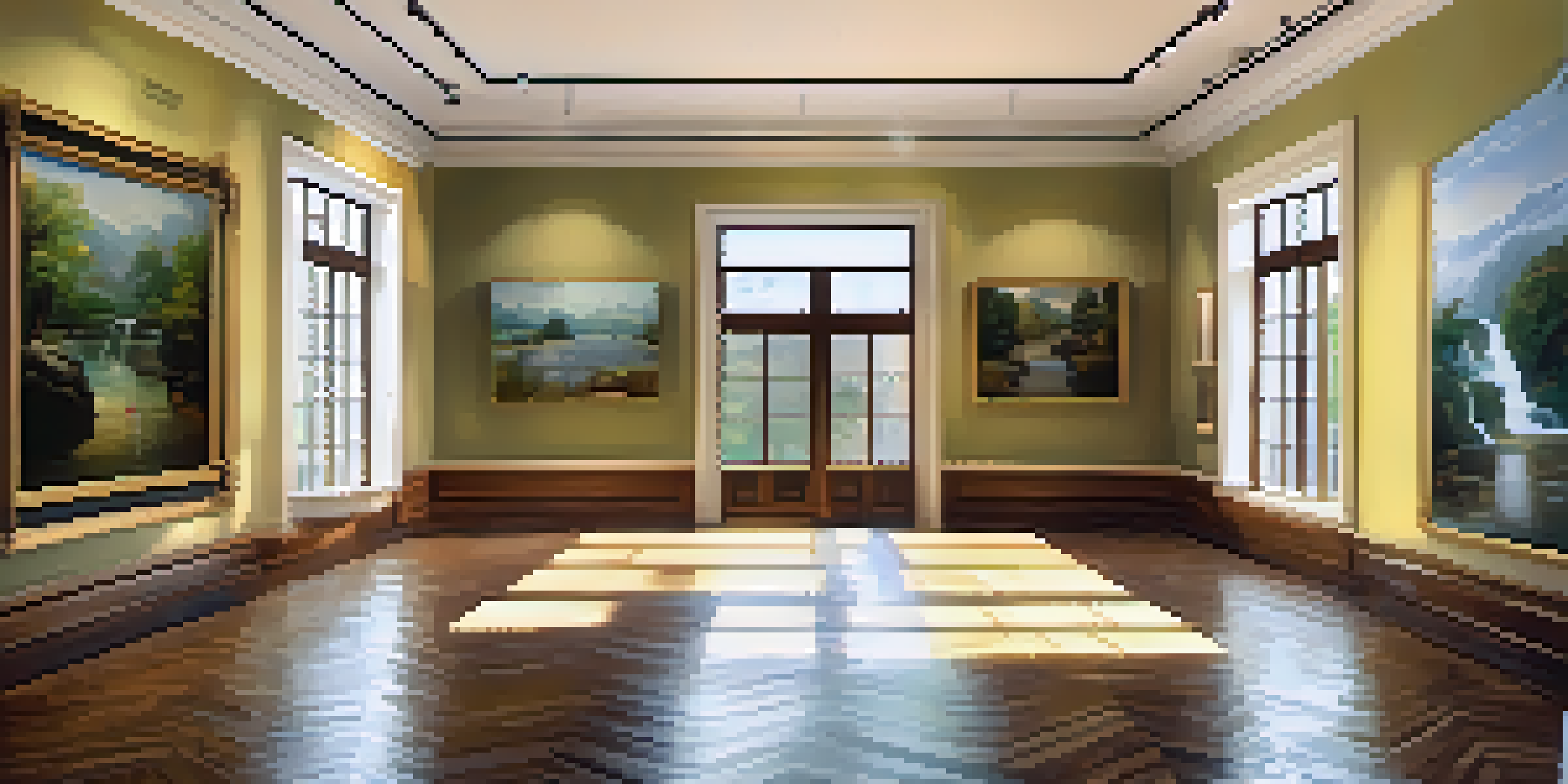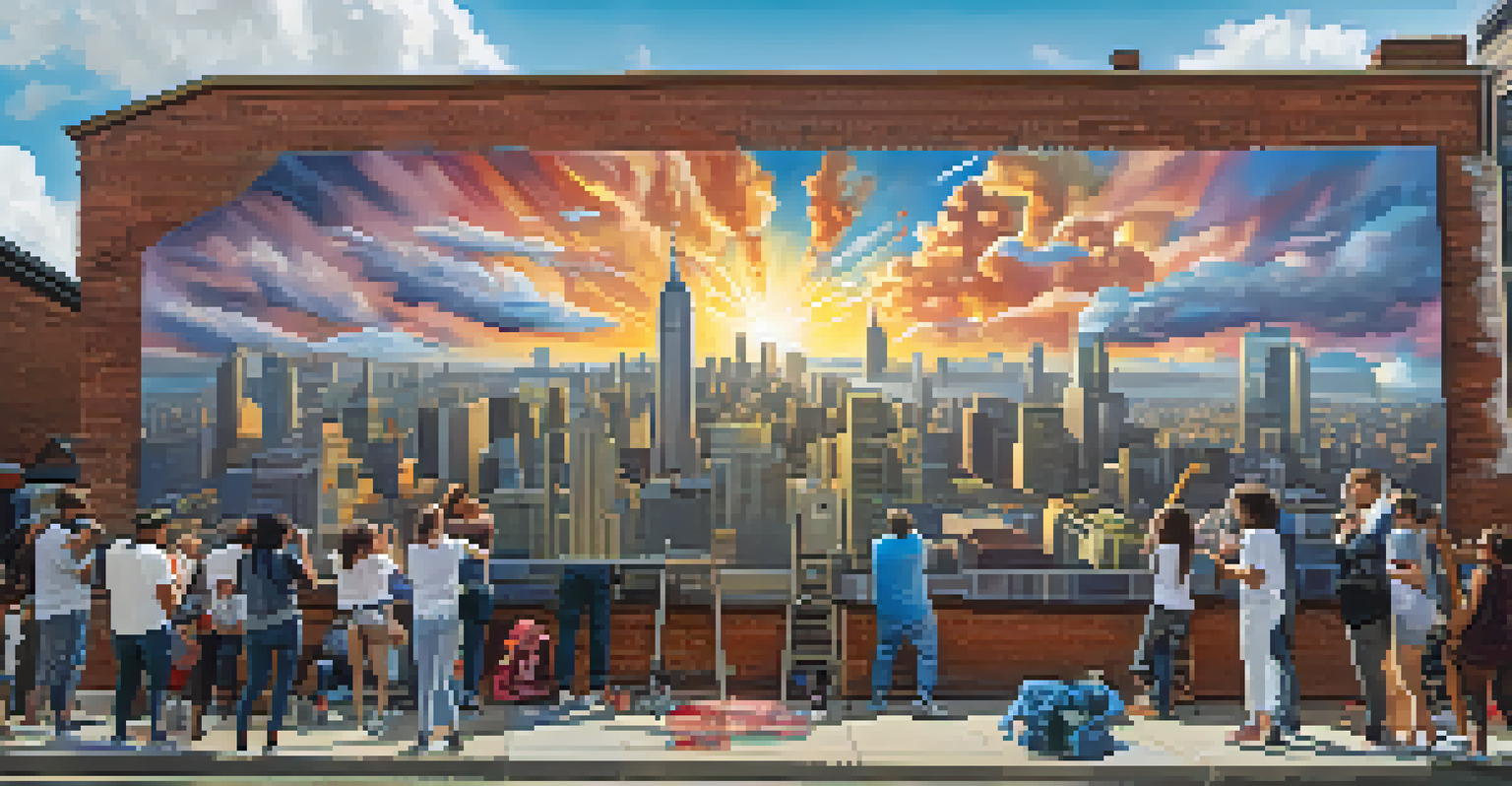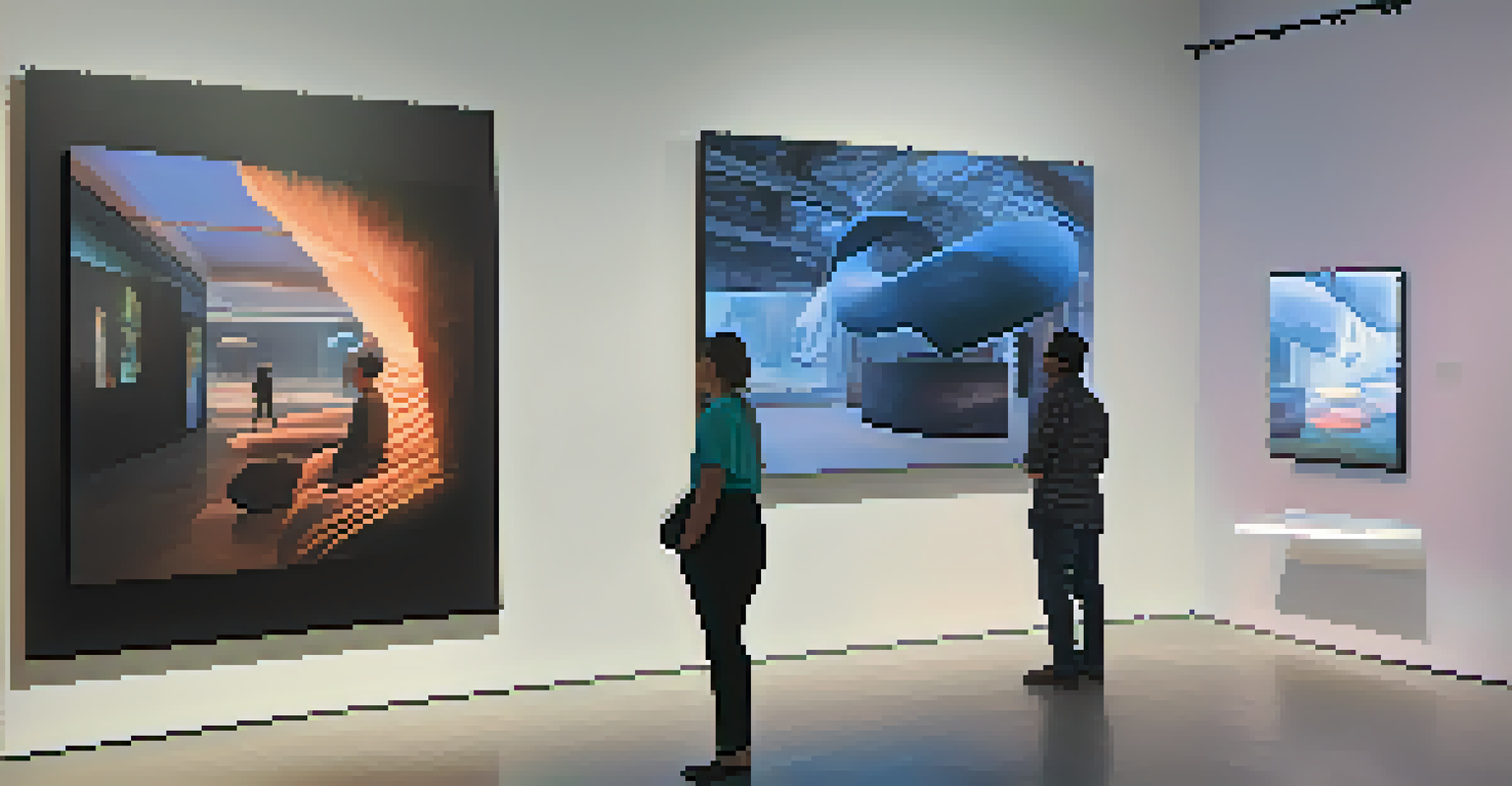Augmented Reality: Merging Physical and Digital Art Forms

Understanding Augmented Reality in Art
Augmented Reality (AR) is a technology that overlays digital information onto the real world. Imagine walking through an art gallery and seeing a painting come to life with animations and sound. This blend of reality and digital content creates an interactive experience that traditional art forms lack.
Art is about the experience and the dialogue it creates with the audience.
In the context of art, AR provides artists with a new canvas, allowing them to communicate their ideas in innovative ways. For instance, a sculptor can enhance their physical piece with a digital layer that tells a story or provides context. This not only enriches the viewer's experience but also invites them to engage with the artwork on multiple levels.
Moreover, AR opens up possibilities for collaboration between artists and technologists. By merging physical and digital mediums, they can create immersive installations that challenge our perceptions of space and art. This fusion encourages exploration and interaction, making art more accessible to a broader audience.
The Evolution of Art Through Technology
The art world has always been influenced by technological advancements, from the invention of the camera to the rise of digital art. Augmented Reality is the latest innovation that is reshaping how we create and perceive art. It represents a significant shift, as artists now have tools that allow for dynamic interactions with their work.

Consider how street artists are using AR to transform their murals into animated experiences. With a simple scan of a smartphone, viewers can see the mural come to life, adding layers of storytelling and emotion. This not only enhances the physical artwork but also creates a dialogue between the artist and the audience.
AR Enhances Art Interaction
Augmented Reality transforms traditional art experiences by allowing viewers to engage and interact with artworks in dynamic and personalized ways.
As AR continues to evolve, it challenges traditional notions of what constitutes art. It blurs the lines between creator and viewer, encouraging participation and collaboration. This evolution reflects a broader trend in society, where technology increasingly influences how we connect and communicate.
Enhanced Viewer Experiences with AR
One of the most exciting aspects of incorporating AR into art is the enhanced experience it offers viewers. Instead of passively observing a piece, audiences can interact with it, leading to deeper engagement. For example, viewers might use an app to unlock hidden layers of information about a painting's history or the artist's inspiration.
Technology is evolving, and art must evolve with it to stay relevant and engaging.
This interactivity fosters a sense of agency, allowing individuals to explore art in a personalized way. People can curate their own experiences, choosing what aspects of a work they want to delve into further. This shift not only makes art more relatable but also democratizes access to information that was once the domain of critics and experts.
Furthermore, enhanced experiences through AR can attract younger audiences who are accustomed to engaging with digital content. By meeting them where they are, museums and galleries can cultivate a new generation of art lovers who appreciate both the traditional and the innovative.
The Role of Artists in AR Creation
Artists play a crucial role in the AR art movement, as they are the visionaries who harness technology to express their ideas. Many artists are now exploring how to integrate AR into their practice, creating works that exist both physically and digitally. This duality allows for a richer narrative and emotional depth in their creations.
For instance, artists like Eduardo Kac have pioneered the use of AR to create interactive pieces that involve viewers in the artistic process. His work invites individuals to become co-creators, blurring the lines between artist and audience. This approach fosters a sense of community and shared experience, enriching the overall impact of the artwork.
Artists Embrace Digital Duality
Artists are increasingly integrating AR into their creations, leading to richer narratives and deeper emotional connections with audiences.
As more artists embrace AR, we can expect to see a growing diversity in artistic expression. This evolution not only challenges conventional aesthetics but also encourages experimentation, pushing the boundaries of what art can be.
Challenges in Merging Physical and Digital Art
While the fusion of physical and digital art through AR is exciting, it does come with its challenges. One major hurdle is the accessibility of technology—not everyone has a smartphone or the necessary apps to engage with AR experiences. This could create a divide between those who can fully appreciate the art and those who cannot.
Additionally, there are concerns about the preservation of AR artworks. Unlike traditional art forms, which can be stored and displayed physically, digital layers may be at risk of becoming obsolete as technology evolves. Artists and institutions must consider how to maintain these works for future generations to appreciate.
Lastly, there's an ongoing discussion about the authenticity of AR art. With digital manipulation, questions arise regarding ownership and originality. As this field grows, it's essential to address these issues to ensure a sustainable and equitable future for AR in the art world.
The Future of AR in the Art Community
Looking ahead, the future of AR in the art community seems bright and full of potential. As technology advances, we can expect to see even more sophisticated AR experiences that challenge our understanding of art. This ongoing innovation will likely lead to new forms of expression and collaboration among artists, technologists, and audiences.
Moreover, as AR becomes more mainstream, we may see an increase in exhibitions dedicated solely to AR art. These events could create spaces where artists can showcase their work alongside interactive experiences, drawing in diverse crowds and fostering community engagement. Imagine walking through a gallery where each piece invites you to interact and explore in ways never before possible.
Challenges of AR in Art
The merging of physical and digital art through AR raises concerns about accessibility, preservation, and the authenticity of digital artworks.
Ultimately, the integration of AR in art is not just a trend—it's a transformative movement that has the power to redefine how we experience and appreciate creativity. By embracing this technology, the art world can continue to evolve, remaining relevant and inspiring in an ever-changing landscape.
Conclusion: Embracing the New Art Frontier
In conclusion, augmented reality is reshaping the art landscape by merging physical and digital forms. This exciting technology not only enhances viewer engagement but also provides artists with new avenues for creativity. As we continue to explore this frontier, it’s essential to embrace both the challenges and opportunities that AR presents.
The potential for collaboration, innovation, and deeper connections between art and audience is immense. By bringing together the best of both worlds, AR encourages us to rethink our relationship with art, making it more immersive and accessible. It invites everyone to be a part of the artistic journey, sparking curiosity and conversation.

As we move forward, let's celebrate the fusion of physical and digital art forms that AR facilitates. It's a thrilling time for artists and art lovers alike, as we stand on the brink of a new era in creativity and expression.